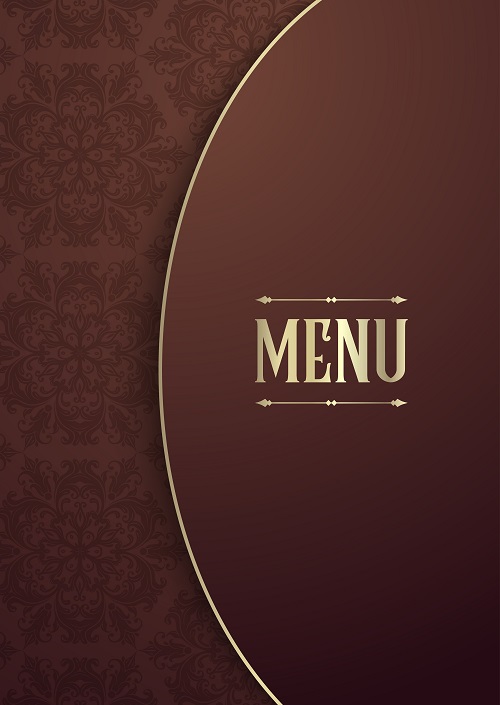Originally the bill of fare (English) or menu (French) was not presented at the table. Banquets generally consisted of two courses, each made up of a variety of dishes, anything from 10 to 40 in number. The first set of dishes were placed on the table before the diners entered – hence the word ‘entrée’ – and, when consumed, these dishes were removed or relieved by another set of dishes – hence the words ‘relevés’ or ‘removes’. This style of service was referred to as service à la française.
 The word ‘menu’ dates back to the eighteenth century, although the custom of making a list of the courses for a meal is much older. Modern menus first appeared during the early nineteenth century, in the Parisian restaurants of the Palais-Royal. At this time, France, and later other countries, adopted the style of service referred to as service à la russe. In this system of service one course is served after another throughout the meal.
The word ‘menu’ dates back to the eighteenth century, although the custom of making a list of the courses for a meal is much older. Modern menus first appeared during the early nineteenth century, in the Parisian restaurants of the Palais-Royal. At this time, France, and later other countries, adopted the style of service referred to as service à la russe. In this system of service one course is served after another throughout the meal.
The menu is primarily a selling aid. The design of the menu should be appealing and interesting to the customer so it encourages them to view its contents. Clear information that is easily found and followed will make the customer feel more at home and will assist in selling the menu.
Design considerations of the menu include:
- size and shape
- artwork/colour
- ease of handling
- logical flow of information.
Other considerations are:
- providing a clear and accurate description of the dishes
- clear indication of pricing
- stating whether a service charge is included or not
- the inclusion of dietary information.
Menus can be presented in a variety of ways. These include:
- single laminated cards
- fold out cards with inserts from the size A5 and above
- iPads
- chalk boards
- white boards
- printed signs, sometimes illuminated from behind
- projections onto table top
